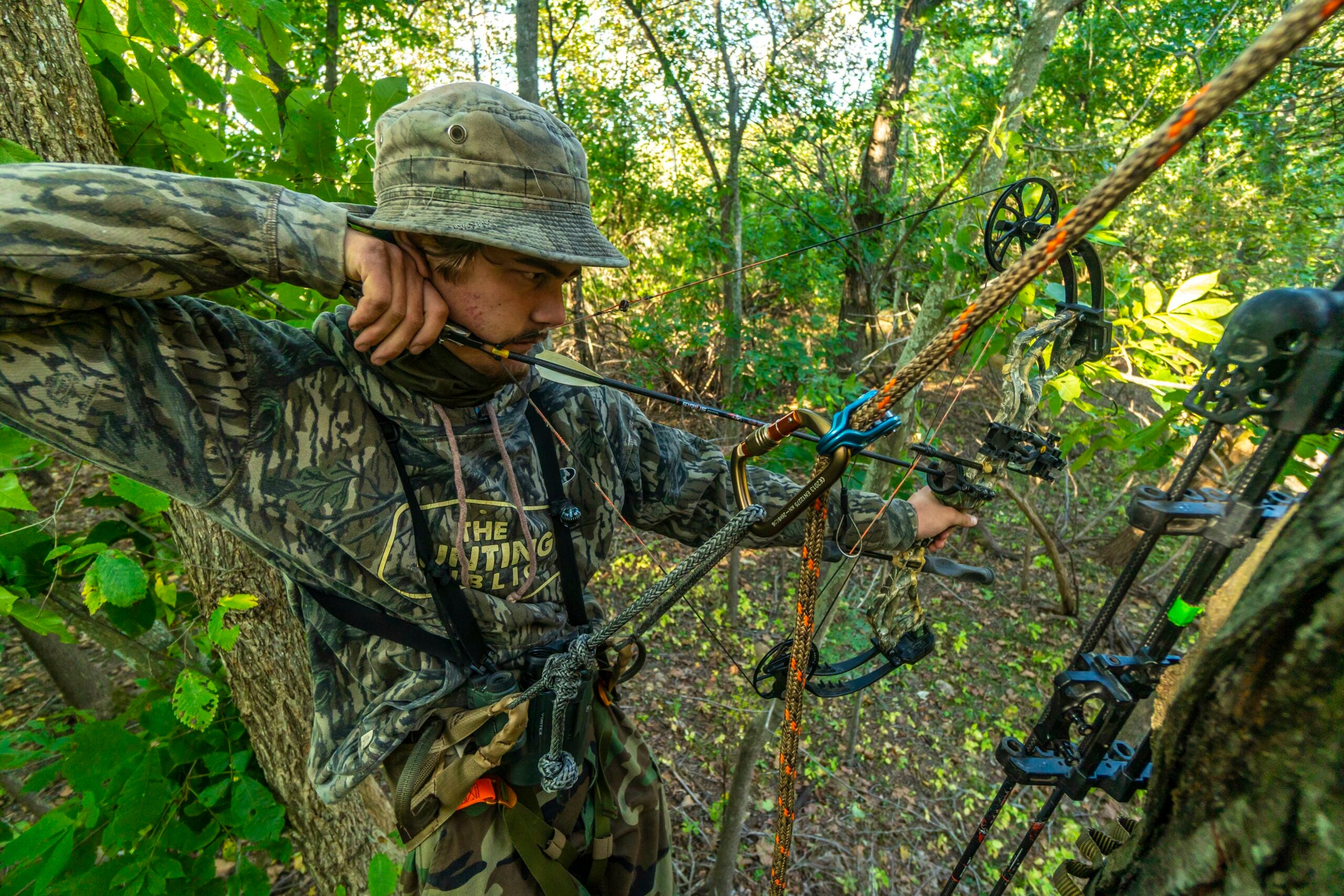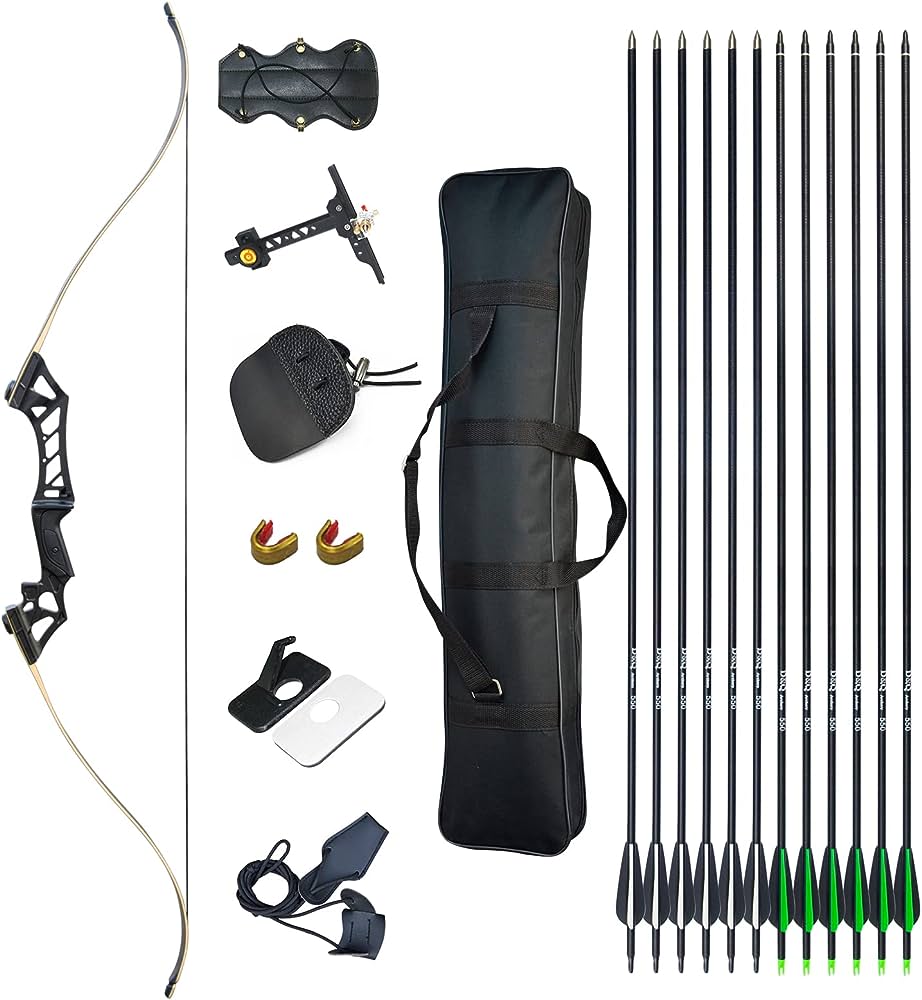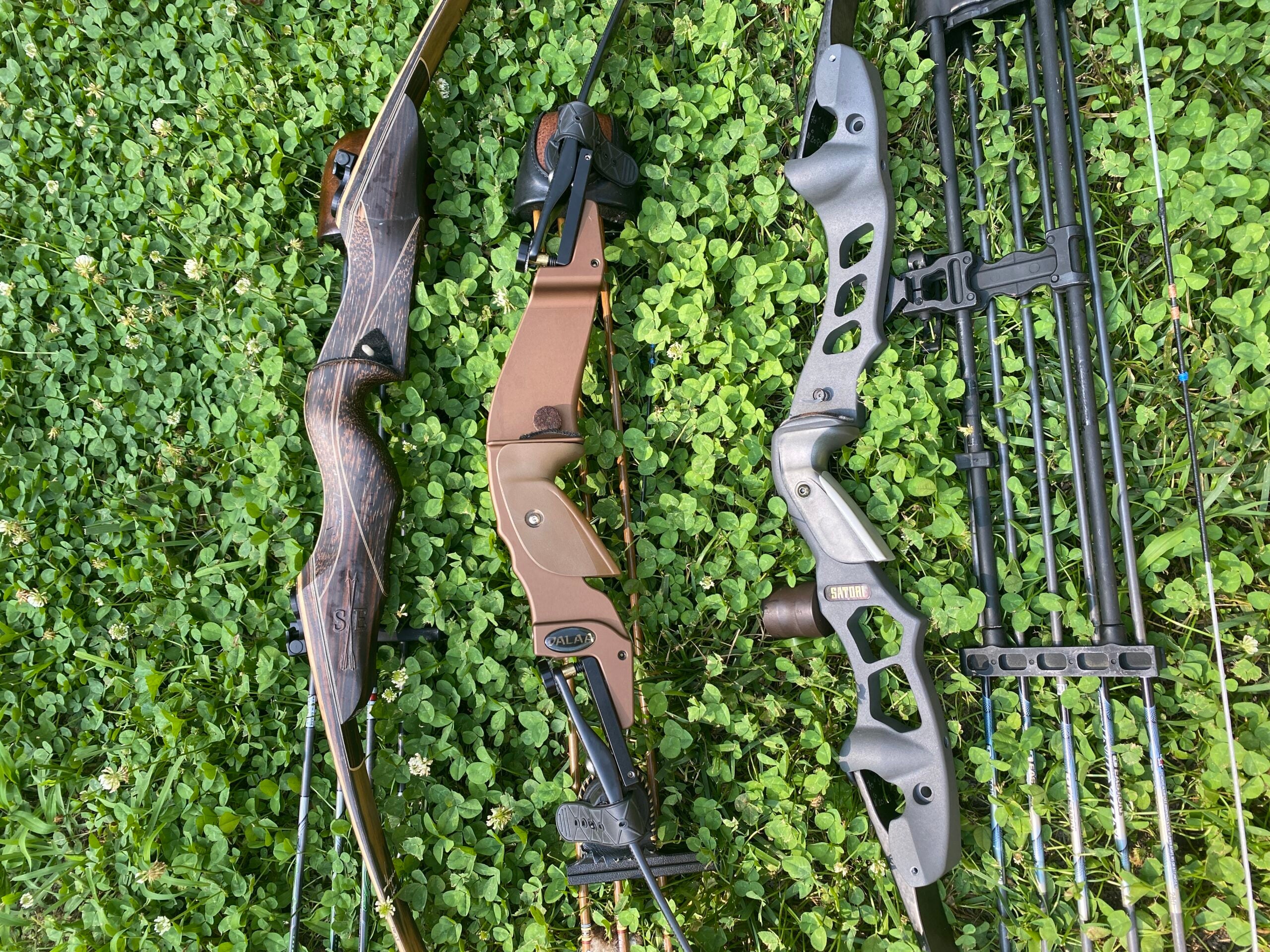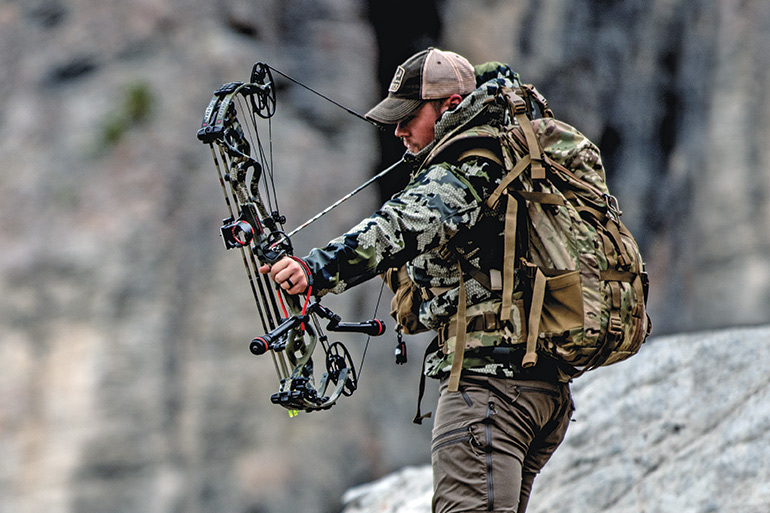To determine the size of a stabilizer for bow hunting, consider the balance and stability it provides. A longer stabilizer helps with steadiness and improved accuracy, particularly when shooting at longer distances or in windy conditions.
Additionally, a weightier stabilizer can offset the bow’s front-heavy balance, reducing hand torque and ensuring a smoother shot. An ideal size can range from 8 to 12 inches for hunting purposes, as it offers enhanced stability without compromising maneuverability in tight spaces.
Finding the right size depends on personal preferences, shooting style, and hunting conditions. Experimenting with different sizes can help determine the optimal stabilizer for your bow hunting needs.

Credit: www.amazon.com
Understanding The Importance Of A Bow Stabilizer
A bow stabilizer is an essential piece of equipment for any bowhunter. It plays a crucial role in improving accuracy and balance when shooting. Whether you are an experienced archer or just starting out, understanding the importance of a bow stabilizer is key to enhancing your hunting performance.
In this section, we will explore the benefits of using a stabilizer for bow hunting, how it improves accuracy and balance, and the factors to consider when choosing a stabilizer size. So, let’s dive in!
Benefits Of Using A Stabilizer For Bow Hunting:
- Reduced bow vibration: A stabilizer helps to minimize the vibrations produced when shooting a bow. By reducing vibration, it improves accuracy and prevents the bow from jumping upon release, which can affect your aim.
- Enhanced bow balance: The additional weight of a stabilizer helps to distribute the weight of the bow more evenly. This improves overall balance, making it easier to maintain steady aim and achieve consistent shots.
- Increased stability: The name says it all! A stabilizer adds stability to your bow, reducing the likelihood of it tilting or twisting during the shot. This stability is particularly crucial for long-distance shots or when dealing with windy conditions.
- Improved accuracy: By reducing vibrations, enhancing balance, and increasing stability, a stabilizer ultimately leads to better accuracy. It allows you to maintain proper form throughout the shot sequence, resulting in improved arrow placement.
How A Stabilizer Improves Accuracy And Balance:
- Vibration dampening: The weight and design of a stabilizer help to absorb and dissipate vibrations that occur when an arrow is released. This reduces hand shock, allowing for smoother shooting and more accurate aim.
- Counterbalance effect: The additional weight of a stabilizer at the front of the bow counterbalances the weight of accessories, such as sights and quivers, that are typically located at the back. This equal distribution of weight improves overall bow balance and reduces torque.
- Increased inertia: The added weight of a stabilizer increases the bow’s inertia, making it more resistant to movement or disturbance. This added stability helps to keep the bow steady during the shot, resulting in improved accuracy.
Factors To Consider When Choosing A Stabilizer Size:
- Bow draw weight: The draw weight of your bow is an important factor to consider when choosing a stabilizer size. Heavier draw weights may require longer stabilizers to help manage the added force generated upon release.
- Bow length: The length of your bow also plays a role in determining the appropriate stabilizer size. Longer bows often benefit from longer stabilizers to maintain balance and stability.
- Preference and shooting style: Different hunters may have different preferences when it comes to stabilizer size. Some prefer shorter stabilizers for maneuverability, while others opt for longer stabilizers for maximum stability. Consider your shooting style and personal preference when choosing a size that feels comfortable and suits your needs.
A bow stabilizer is a vital accessory for bowhunters. Its numerous benefits, including reduced bow vibration, enhanced balance, increased stability, and improved accuracy, make it an essential tool for achieving consistent and accurate shots. When choosing a stabilizer size, consider factors such as bow draw weight, bow length, and personal preference to find the perfect match for your hunting needs.
So, equip yourself with a quality stabilizer and take your bowhunting to the next level! Happy hunting!
Determining The Ideal Length For Your Stabilizer
The Impact Of Stabilizer Length On Bow Performance
- The length of a stabilizer can greatly influence the performance of a bow. Here’s how:
- A longer stabilizer provides greater stability by increasing the weight at the end of the bow. This reduces the bow’s chances of moving or twisting during the shot.
- The added weight also helps counterbalance the weight of accessories on the bow, such as sights or quivers, resulting in better balance and less torque.
- On the other hand, a shorter stabilizer offers more maneuverability, making it ideal for situations where quick and agile shots are required.
- Additionally, a shorter stabilizer reduces the chance of interference when hunting in brushy or tight conditions.
How To Measure Your Draw Length For Accurate Stabilizer Selection
- To determine the ideal stabilizer length for your bow, you first need to measure your draw length. Here’s how:
- Stand upright with your back against a wall and extend your arms outward, forming a t-shape with your body.
- Have someone measure the distance from the tip of one middle finger to the tip of the other middle finger. This measurement is your draw length.
- Once you have your draw length, you can choose a stabilizer length that suits your needs.
Optimal Stabilizer Length For Different Types Of Hunting Situations
- For hunting situations that require precision and accuracy, a longer stabilizer is often recommended. Here’s why:
- Target shooting or long-distance shots benefit from the added stability and reduced bow movement provided by a longer stabilizer.
- When hunting from a treestand or ground blind, where shots are typically taken at moderate distances, a medium-length stabilizer can strike a balance between stability and maneuverability.
- In situations where quick shots are necessary, such as spot-and-stalk hunting or hunting in thick vegetation, a shorter stabilizer allows for easier maneuverability.
- Ultimately, the optimal stabilizer length depends on your personal preference, hunting style, and the environments you frequently hunt in. Experimentation may be necessary to find the perfect fit.
Remember, when it comes to selecting the right stabilizer length for bow hunting, there is no one-size-fits-all answer. Factors such as personal preference, shooting style, and hunting conditions all play a role in determining the ideal length. By understanding the impact of stabilizer length on bow performance, measuring your draw length accurately, and considering different hunting situations, you can make an informed decision that enhances your bow hunting experience.
So go ahead, choose the stabilizer length that suits you best and get ready for a successful hunt!
Balancing Weight: Finding The Right Balance With Your Stabilizer
The Relationship Between Stabilizer Weight And Steadiness
- The weight of your stabilizer plays a crucial role in enhancing your shooting accuracy and steadiness. Finding the right balance is essential for optimal performance. Here are some key points to consider:
- Weight distribution: The weight of the stabilizer influences how the bow handles and counterbalances the weight of the bow itself. It helps to distribute the weight more evenly, reducing bow torque and improving stability during the shot.
- Absorbing vibration: A heavier stabilizer absorbs more vibration, reducing the shock felt in your hands and improving overall control. This can be particularly beneficial for hunters who shoot higher poundage bows or experience discomfort from recoil.
- Stabilization effects: A heavier stabilizer can enhance shot stabilization by minimizing movement and improving steadiness at full draw. It provides a greater resistance to movement caused by factors such as wind, accidental bow movement, or shaky hands.
How To Determine The Appropriate Weight For Your Hunting Needs
- Determining the appropriate weight for your stabilizer requires some experimentation and consideration of your specific hunting needs. Here are a few steps to help you find the right weight:
- Consider bow specifications: The weight of your bow can influence the weight of the stabilizer needed for optimal balance. Heavier bows may benefit from a slightly heavier stabilizer to counterbalance the weight effectively.
- Assess shooting style: Different shooting styles may require different stabilizer weights. If you tend to hold your aim steady but struggle with shot follow-through, a slightly heavier stabilizer may assist in maintaining control during the release.
- Test different weights: Experiment with different stabilizer weights to find the one that feels most comfortable and natural to you. Start with a moderate weight and gradually increase or decrease until you find the sweet spot that maximizes stability and accuracy.
Exploring Different Weights And Their Effects On Shot Stabilization
- The weight of your stabilizer can have varying effects on shot stabilization. Here are some points to consider while exploring different weights:
- Lighter stabilizers: Lighter stabilizers offer greater maneuverability and ease of movement. They are ideal for hunters who prioritize mobility, especially when navigating through dense terrain or when quick shots are required.
- Moderate stabilizers: Stabilizers with moderate weights strike a balance between maneuverability and stability. They provide a good compromise for hunters looking for improved shot control without sacrificing too much mobility.
- Heavier stabilizers: Heavier stabilizers provide enhanced stability during the shot by minimizing bow movement and absorbing more vibration. They are suitable for hunters who prioritize steadiness and accuracy over maneuverability.
- Personal preference matters: Ultimately, the choice of stabilizer weight is subjective and can vary among individual archers. It’s important to find the weight that feels most comfortable and allows you to maintain control and accuracy consistently.
Remember, finding the right stabilizer weight is a personal journey. Experimentation and practice will help you discover the perfect balance between stability, mobility, and comfort, ensuring each shot you take is precise and on target.
Selecting The Right Stabilizer Material For Your Bow
Understanding The Differences Between Carbon, Aluminum, And Rubber Stabilizers
When it comes to selecting the right stabilizer material for your bow, it’s important to understand the differences between carbon, aluminum, and rubber stabilizers. Each material offers its own set of pros and cons in terms of durability and performance.
Here’s a breakdown of the key points to consider:
Carbon Stabilizers:
- Lightweight and durable
- Excellent vibration dampening properties
- Offers maximum stability and precision
- Ideal for long-range shooting
- Carbon absorbs more shock and vibration than other materials
Aluminum Stabilizers:
- Strong and rigid
- Provides balanced support for the bow
- Typically less expensive than carbon stabilizers
- Available in various lengths and weights
- Offers good stability and accuracy
Rubber Stabilizers:
- Absorbs and dampens vibration effectively
- Reduces noise and hand shock
- Offers a comfortable grip
- Good option for hunters who prioritize noise reduction
- Provides decent stabilization for short-range shooting
When choosing the ideal material for your specific hunting requirements, there are a few factors to consider. Here are some key points to keep in mind:
Factors To Consider When Choosing The Ideal Material For Your Specific Hunting Requirements:
- Shooting style: Determine whether you prioritize stability, accuracy, or noise reduction.
- Hunting environment: Consider the terrain and weather conditions you’ll be hunting in. Some materials may perform better in certain environments.
- Personal preference: Test out different stabilizers to see which material feels the most comfortable and suits your shooting style.
- Budget: Consider the cost of the stabilizers, as carbon stabilizers tend to be more expensive than aluminum or rubber options.
- Weight and length: Determine the right balance between weight and length for optimal stability and maneuverability.
Remember, the right stabilizer material for your bow hunting needs will ultimately depend on your personal preferences and shooting style. By understanding the differences between carbon, aluminum, and rubber stabilizers, as well as considering the key factors mentioned above, you’ll be well-equipped to make an informed decision and enhance your bow hunting experience.
Happy hunting!
Advanced Features And Accessories For Enhanced Stabilization
Exploring Advanced Technologies Such As Dampeners And Vibration Reduction Systems:
- Dampeners: These innovative accessories are designed to absorb and reduce the vibrations produced when releasing an arrow. They attach to the stabilizer and help minimize any unwanted movement, resulting in a more stable and accurate shot.
- Vibration reduction systems: These systems go beyond simple dampeners by incorporating multiple components to effectively dampen and eliminate vibration. They often include additional weights, elastomers, and dampening materials to further enhance stability and reduce noise.
The Benefits Of Incorporating Additional Accessories For Improved Stability:
- Enhanced precision: By adding advanced accessories to your stabilizer setup, you can greatly improve your overall shooting accuracy. The reduction in vibrations and unwanted movement allows for greater precision when aiming and releasing your arrow.
- Increased stability: Accessories like dampeners and vibration reduction systems help to stabilize your bow by minimizing unwanted vibrations caused by the release of the arrow. This stability not only improves accuracy but also allows for a more confident and controlled shot.
- Reduced noise: Many advanced accessories also aid in reducing the noise generated by the bow during the shot. By absorbing vibrations and minimizing bow movement, these accessories can make your hunting experience quieter, reducing the chances of spooking nearby game.
Understanding The Compatibility Of Different Stabilizer Features With Your Bow Setup:
- Bow compatibility: It’s essential to ensure that the stabilizer accessories you choose are compatible with your specific bow setup. Factors such as the weight of the bow and the type of attachment points available should be considered to ensure a proper fit.
- Balancing weights: Some stabilizers allow for the addition of balancing weights, which can be adjusted to achieve the desired balance and stability. Understanding how these weights interact with your bow’s weight distribution is crucial for optimal performance.
- Length and shape: Stabilizers come in different lengths and shapes, each offering unique benefits. Longer stabilizers provide more stability, while shorter ones offer improved maneuverability. It’s important to choose a stabilizer length and shape that suits your hunting style and preferences.
Remember, selecting the right size and accessories for your stabilizer can significantly enhance your bow hunting experience, providing you with improved stability, precision, and a quieter shot. Experiment with different stabilizer features to find the combination that works best for you and your unique hunting setup.
Happy hunting!
Expert Tips For Maintaining And Fine-Tuning Your Stabilizer
A well-maintained and properly fine-tuned stabilizer can significantly enhance your bow hunting experience. To ensure optimum performance and accuracy, it is essential to follow proper care and maintenance practices, employ the right fine-tuning techniques, and avoid common mistakes. In this section, we provide expert tips to help you maintain and fine-tune your stabilizer effectively.
Proper Care And Maintenance Practices To Prolong The Lifespan Of Your Stabilizer:
- Clean your stabilizer regularly using a soft cloth and mild soap or cleaning solution.
- Inspect the stabilizer for any signs of damage, such as cracks or loose components, before and after each hunting session.
- Store the stabilizer in a cool, dry place to prevent moisture damage.
- Apply a small amount of lubricant to the stabilizer’s moving parts, such as the threads and pivot points, to ensure smooth operation.
- Check the tightness of all screws and bolts regularly, but be careful not to overtighten and risk damaging the stabilizer.
- If your stabilizer has removable weights, ensure they are securely tightened to prevent any accidental loss during use.
- Consider using a protective case or cover to shield your stabilizer from impacts or other potential sources of damage when not in use.
Fine-Tuning Techniques To Optimize Stabilization And Accuracy:
- Experiment with different weight configurations by adding or removing weights until you find the right balance for your shooting style and bow setup.
- Adjust the length of your stabilizer to achieve the desired balance and stability. Shorter stabilizers are generally more maneuverable, while longer stabilizers offer increased stability.
- Fine-tune the positioning of the stabilizer by adjusting its angle and orientation to achieve optimal balance and minimize torque.
- Use a level to ensure that your stabilizer is perfectly aligned with your bow, helping to reduce any unwanted twisting or tilting during the shot.
- Consider using vibration dampeners or dampening materials to reduce residual vibrations and noise generated by the stabilizer.
Common Mistakes To Avoid When Using And Maintaining Your Stabilizer:
- Overlooking regular cleaning and maintenance can lead to performance issues and decreased lifespan of your stabilizer.
- Ignoring signs of damage or loose components can compromise the effectiveness and safety of your stabilizer.
- Neglecting to periodically check the tightness of screws and bolts can result in instability and potential detachment of weights or other parts.
- Failing to fine-tune your stabilizer to suit your shooting style and bow setup may lead to reduced accuracy and stability.
- Using excessive weight on your stabilizer without finding the right balance can impede your ability to aim and shoot comfortably.
By following these expert tips, you can maintain and fine-tune your stabilizer effectively, ensuring optimal stabilization, accuracy, and overall performance while bow hunting. Remember to prioritize proper care, regular maintenance, and fine-tuning to maximize your hunting experience.
Frequently Asked Questions For What Size Stabilizer For Bow Hunting?
What Is The Purpose Of A Stabilizer For Bow Hunting?
A stabilizer for bow hunting helps to improve accuracy and stability by reducing the bow’s vibration and balancing the weight distribution, resulting in more consistent shots and better control.
How Does The Size Of The Stabilizer Affect Bow Hunting?
The size of the stabilizer determines the amount of weight and balance it adds to the bow. Longer stabilizers provide more stability and vibration dampening, while shorter ones offer greater maneuverability. The right size will depend on personal preferences and hunting conditions.
What Are The Recommended Lengths For Bow Hunting Stabilizers?
The recommended length for bow hunting stabilizers typically ranges from 6 to 12 inches. Shorter stabilizers offer more maneuverability for hunting in tight spaces, while longer ones provide better stability and balance for long-distance shots. It’s important to choose a length that suits your hunting style and preferences.
What Is The Ideal Weight For A Bow Hunting Stabilizer?
The ideal weight for a bow hunting stabilizer depends on personal preferences and the specific bow setup. Generally, a stabilizer weighing between 4 to 8 ounces is recommended. Experimenting with different weights will allow you to find the balance that feels most comfortable and improves your shooting accuracy.
Does The Stiffness Of The Stabilizer Matter For Bow Hunting?
Yes, the stiffness of the stabilizer affects its effectiveness for bow hunting. A stiffer stabilizer provides more stiffness and additional vibration dampening, resulting in improved accuracy. However, too much stiffness may make the stabilizer less forgiving and reduce its ability to absorb vibrations effectively.
Finding the right balance is essential for optimal performance.
Conclusion
Finding the right size stabilizer for bow hunting is crucial to improving your accuracy and overall shooting experience. By understanding the factors that affect stabilizer size, such as your bow’s weight, your shooting style, and the type of game you’re hunting, you can make an informed decision.
Remember that a longer stabilizer can provide more stability and balance, while a shorter one offers better maneuverability. Additionally, consider the weight distribution and vibration reduction capabilities of the stabilizer. Experimenting with different sizes and configurations can help you find the perfect fit for your specific needs.
By selecting the right size stabilizer, you’ll benefit from enhanced accuracy, reduced noise and vibration, and improved overall performance. So, take the time to research and test various options to optimize your bow hunting setup and take your skills to the next level.

General Manager & Auditorial Head.
Killian Jake is a World Sports Traveler and hobbyist sports lover. By exploring different sorts of playing modules like indoor, outdoor, and many more. As for professionalism and writing, it’s helpful to give you the right suggestions on different games and sports.





